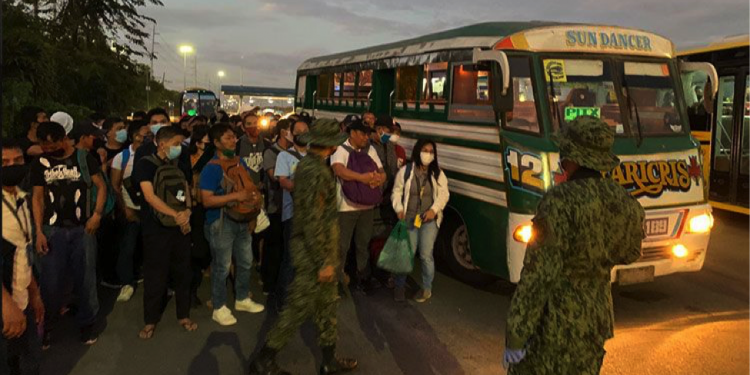ILO study shows Philippines posts most working hours lost in ASEAN due to pandemic

Members of the Inter-Agency Council for Traffic check documents of commuters lining up to take a bus ride in NCR. Photo
BANGKOK – The International Labor Organization released its study showing the Philippines has suffered from the highest working hour losses among Southeast Asian countries last year due to the COVID-19 pandemic.
In 2020, the Philippines posted a decrease of 13.6 percent in working hours after it imposed one of the world’s strictest lockdowns, ILO Regional Office for Asia senior economist Christian Viegelahn said in a study on COVID-19 and the ASEAN labor market: Impact and policy response.
“Indeed the Philippines, we estimated, this is the country in the region with the highest working hour losses driven by several factors. The Philippines was one of the countries probably with the strictest lockdown measures in the course of 2020, this is certainly one factor that contributed to that,” Viegelahn said.
He said there is “very heavy impact” on the tourism sector, retail, hotels and restaurants, the arts and entertainment sector, construction and potentially manufacturing.
Regionally in 2020, there were 10.6 million fewer workers compared to what could have been without the pandemic, the study showed.
Last year, working hour losses in the region were at 8.4 percent, which translated to the working time of about 24 million full-time workers. Labor income also declined by 7.8 percent, it said.
The rising COVID-19 cases and the slow vaccine rollout are also likely to “prolong” the labor market recovery in the ASEAN region, the ILO said.
Working hours in the region are projected to “only partially recover” in 2021 and 2022, the study showed.
In a baseline scenario, the region could lose 7.4 percent in working hours in 2021, said Viegelahn.
The region could lose 7 percent in the optimistic scenario and 7.9 percent in the pessimistic scenario, respectively, compared to pre-pandemic levels, he added.
In the first quarter of 2021, the region posted working hour losses of 6.1 percent, while losses were at 6.2 percent in the second quarter.
Losses could be worse in the second half, he said.
“We do actually expect a stronger impact in the second half mainly driven by the current surge in infection,” Viegelahn said.
“We have workers out there but they are working less than they used. We have some people that really lost their jobs that’s why working hours have gone down,” he added.
Several countries in Asia, such as Indonesia, have been battling the outbreak of the new and more contagious COVID-19 Delta variant.
COVID-19 cases in the Philippines have also been rising in the previous weeks.
Although employment numbers in the Philippines are back to pre-pandemic levels, the Asian Development Bank said jobs created were of lower quality.
In June, the unemployment rate in the Philippines remained steady but underemployment, or those needing more job hours, rose 14.2 percent in June, up from 12.3 percent in the previous month, the state statistics bureau earlier said.
The longer period people are jobless due to the pandemic or the break period “is something that could be a scar in the CV (curriculum vitae) of the workers,” Viegelahn said.
ASEAN countries, collectively, have allocated nearly 16 percent of GDP (gross domestic product) on fiscal stimulus response as of end May 2021, the report said.
But the ILO said policy action in social protection, enterprise support and labor protection are still needed “to ensure human-centered recovery from the crisis” in the region.






